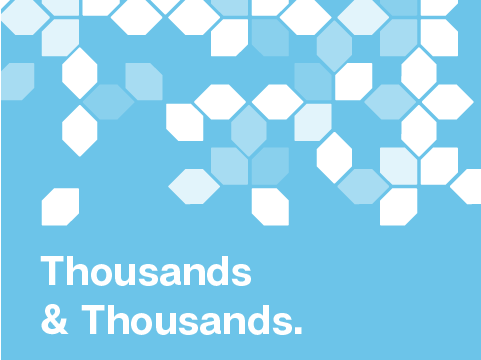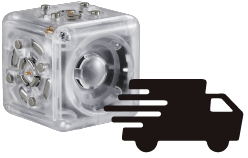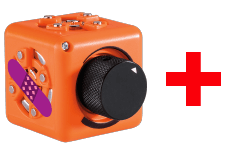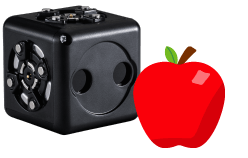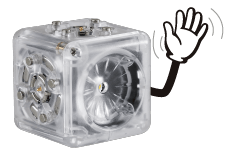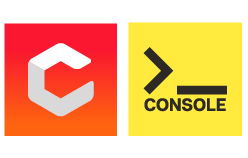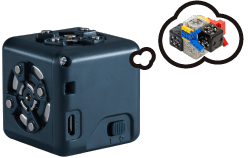We have a sign on our production floor that says “Fail early, Fail often.” The application of this idea is simple and manifold in manufacturing Cubelets – it’s vastly better to have any number of parts fail to meet expectations early in the process of building Cubelets than to have a whole Cubelet assembled and then fail to work. This makes perfect sense but applying this strategy to my own “production” of classroom activities and lesson plans was a little challenging. It’s hard to foresee what might NOT work in a plan you’re generating when it’s on paper. And unlike Cubelets, plans on paper are hard to quality test in our factory.
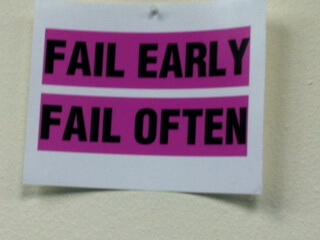
So, I headed out to spend a few days in the classrooms of a wonderful school we are lucky to have a great relationship with. I know a little bit about working with a classroom of exuberant 6 year olds, or too-smart-for-their-own-good 9 year olds and lots of ages in between. I’ve taught a variety of topics in a variety of venues to students of a range of ages in the last 18 years. I’ve learned that there is one truth that pervades every class I’ve ever been charged with leading no matter who, what, or where I was teaching. Here it is – are you ready? Whatever you plan to do in a class, you must also plan to do things you hadn’t planned on. In other words, a lesson plan should include the elbow room to pounce on what is moving students closer to the discovery and understanding you’re targeting even if that means re-arranging parts of what you thought you would do. So, as I headed out of our office for a couple of days, my mission was pretty simple – I wanted to teach, using one of my classroom plans for Cubelets, and see for myself how it played out with real students, their real questions, and in a real classroom.
In large part, I was looking for any glaring gaps or problems – places where my lesson plan wasn’t coming in for a landing, or ideas the kids couldn’t connect with the robots they were making. Were my plans too ambitious? Too detailed? Not detailed enough? Fun? Boring? Observing “out in the field” answered all of those questions, raised others, and gave me a clear picture of what ideas students most actively cultured given Cubelets and these challenges.
But it also reminded me of something very fundamental about how I see education. Kids are “little scientists.” Without having the language for it, without a formal research proposal and with no grant money or fancy lab coats, kids are actively engaged in testing theories throughout their days. It’s their primary operating mode and they carry it out tacitly but very seriously in nearly all that they do. Piaget first stated this idea, and as he observed more and more children he added more detail to his proposed stages of child development. The overarching idea, revolutionary at the time, is that children engage in trying to make sense of their environments actively rather than just passively receiving information or being uploaded wholesale information, as onto a blank slate.
Like any theory, Piaget’s isn’t perfect. There are more articulated versions of it, and less articulated versions, but the idea that kids are capable of developing ideas about what they encounter in the world and then revising them as they obtain more data informed the work of other great thinkers (Chomsky, Vygotsky, and Papert) in fields including Linguistics and Modern Cognition, Child Development, Math, and Computational Thinking and Education.
Watching students ages 5-12 taking on the task of being “robot investigators” this “Little Scientist” model of how kids learn and reconcile their worlds seemed inescapable. I asked students to use observations of robot “behavior” or reactions to try and work backwards to find the cause. Students engaged deeply in the task of figuring out what their robots liked, would do, and which inputs corresponded with which outputs in order to best understand what their robot was sensing and why their robot was reacting as it did. Part of my lesson plan was about robotics, and part of my lesson plan was about biology and behavior, and a third part was about scientific method and critical thinking. (I’m the kind of educator that thinks learning these skills not only can but should be handled in inter-disciplinary ways.) I was thrilled with how sophisticated students were in proposing methods to test their theories and how industrious and boisterous they were in carrying out their plans and tickled by how gleefully students’ reported “We have a theory!” But what astounded me was that students pressed further into questions about what the robot knows or how the sensor worked. Students posed questions about robotics and behavior that I anticipated but I also got queries about what counts as “knowing” something, questions that pointed towards complexity and emergent behavior, biology, and what counts as “being alive” and impromptu musings on how brains work and what parts of them might be contained in a robot. Philosophy’s deepest conundrums exposed by children under five feet tall, no joke.
Scientists get used to looking for the fault lines in their theories and are trained to lay out their experiment design so that their methods have narrow parameters and their hypothesis are built to be discredited rather than confirmed. Although the “Little Scientists” I worked with didn’t have this training, they were perfectly capable of adapting their ideas to accommodate new information, even if that information complicated or undermined an explanation they had been busily shoring up just moments ago. In some cases I saw students pause in order to deeply reconsider their hypothesis and start over, but in most cases students were visibly excited by having more information, more insight, more to account for, even if it meant scrapping their idea and reworking from the ground up. I know adults, professionals, who could make fabulous use of the enthusiasm these students had for the “Fail early, fail often” principle – they seemed not just to abide it but to welcome the chance to absorb more data and revise.
In that spirit, I returned from my jaunt with a new motivation to look at what I had created and to re-work, rewrite, and revise. I’d seen six and seven year olds mournfully announce that “this robot is NOT listening to my words. I’m using my words like I’m supposed to and it’s not paying attention” and then be reminded that robots might be sensing other things than words. They immediately re-tasked themselves to find out what the robot could be responding to and to expand their thinking about a plausible explanation. It’s hard to not learn the lesson that testing things out and being willing to keep testing, refining, and amending is the way to be.
With that in mind, here is an open invitation to try out our first Cubelets activities at home, in your classes, at an after-school program, or a camp, and tell us what worked, what you liked, how your students responded, and suggestions you have for improvements or next activities. Last week I used the lesson plans on Robots and Behavior, but I’ve also posted activities for Robots and Sensing, Properties and Characteristics, and Cause and Effect. They can all be found in the Education section of our Forum and start with the title “Cubelets Activity”. It would be wonderful to hear from educators of all varieties as they take a look at these and have thoughts about ways to make them better, suggested next activities, or feedback on how your students and kids responded. We plan on revising and re-working these many times. Theories are made to be tested, and the only way to do it is to get lots of data so we’re actively inviting you to be part of this exciting development with us, test these out, and then talk to us about them! Help us fail – I know from my time with young ones how informative failures can be!
Many, many thanks to The Colorado Springs School for their willingness to let me try things in their classes!
